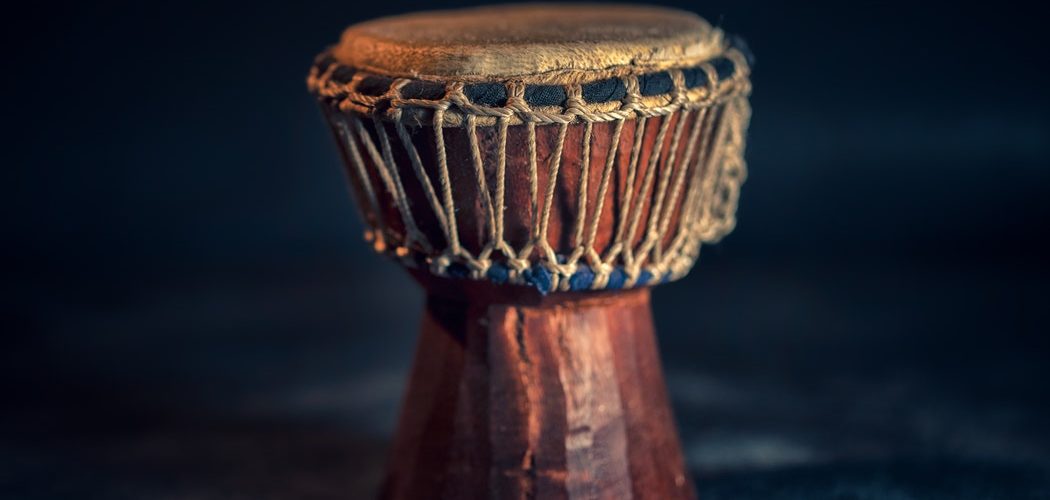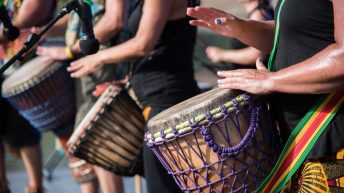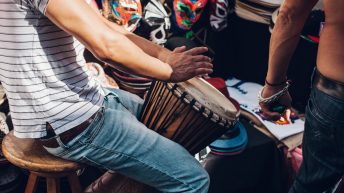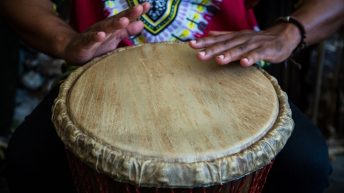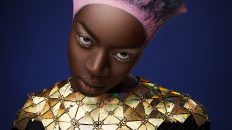The Djembe or Ngoma (membranophones) is an animal skin-covered goblet drum played with bare hands. It has a shell carved of hardwood and a drumhead made of untreated rawhide. The weight of a djembe varies depending on size and shell material. Originally from West Africa, it was traditionally played by men and widely recognised as the soul of many African communities.
Drums have been an intrinsic part of African culture for generations – a traditional instrument used to celebrate all the aspects of life. In Africa, they hold a deeper, historical and symbolic significance. The djembe is frequently used during political events and social ceremonies such as births, marriages and funerals. They spark courtships and accompany religious rites and rituals, calling up ancestral spirits.
Due to their versatile nature and ability to create a wide range of sounds, djembes were also used as a call to arms in ancient times. They were kept in sacred dwellings and protected during battle.
On other note, drums are about communication and music creation, two essential characteristics of African community life. For centuries the ‘talking drums’ were a primary source of communication between tribes used to transmit messages sometimes across great distances.
There are different types of djembes and each serve different purposes in different communities.
1. Mangbetu split drums
Split Drums and Ivory horns, Mangbetu tribe: These drums create fast-paced, upbeat, rhythmic beat that signifies most African music. The drums can be both musical instruments and works of art. Their sculptural forms that are often decorated in a resplendent manner suited to their ceremonial function. They can also be everyday objects with simple but monumental form.
2. Headed drum
Two-headed drum, Nigeria: The sound generated is generated by striking the drumhead with hands, a stick, a rubber mallet or even the bones of the deceased. The surface can also be rubbed to create soft swishing sounds. The headed drum sometimes has rattling metal jingles attached to the outside or seeds and beads placed inside to create extra kinds of noises.
3. Tonga ngoma
Tonga drum, Zimbabwe: Also known as ‘open drums’, these are single-headed with an opening at one end. In size they can be long or diminutive like the tom tom. In general, the bigger the drum the lower the note and the more tension in the head, the higher the note.
4. Shangaan drummers
Shangaan drummers, Zimbabwe: Shangaan drummers have handles or straps and be held under the armpits. They can be rested on a wooden support and they can have feet or pedestals standing on their own, being carried on backs or held between or on the knees. They can be played singly, or in pairs, or be part of a large group drum ensemble with graded tones and pitches.
5. Yangere slit drum
Yangere slit drum, Central African Republic: Also known as “Idiophones”, they create sound not by beating or rubbing but by the instrument vibrating having been struck, shaken or scraped.

